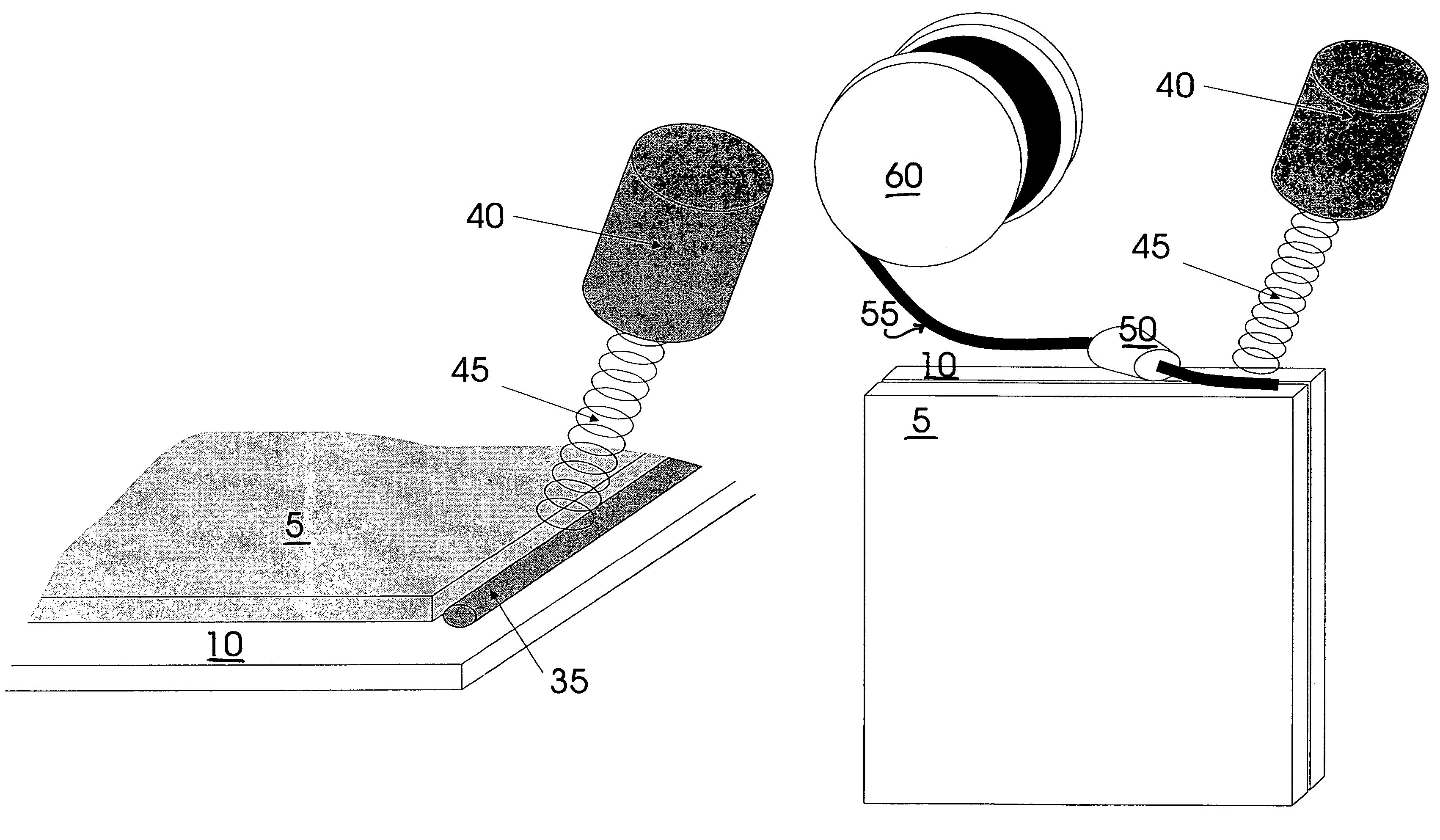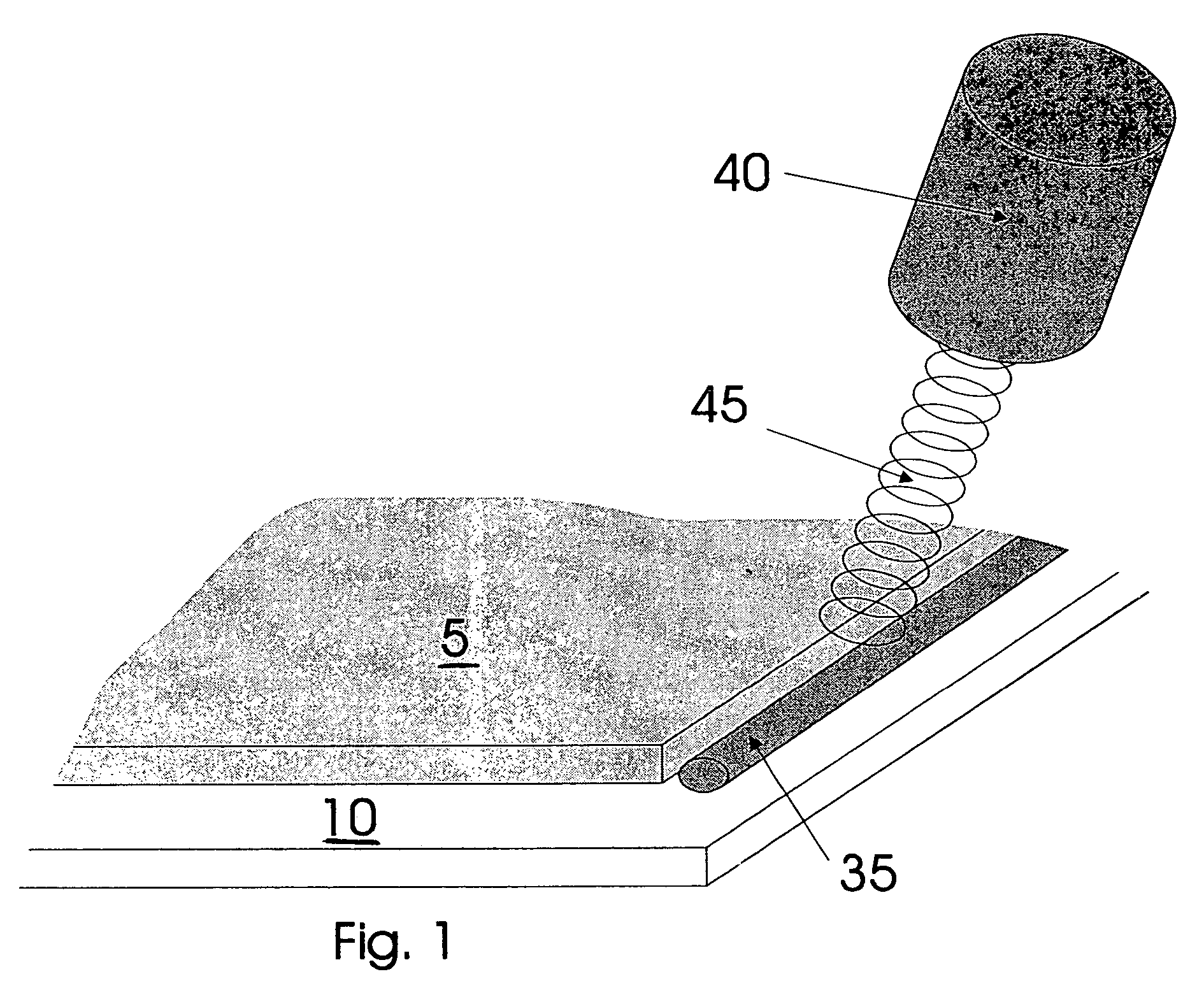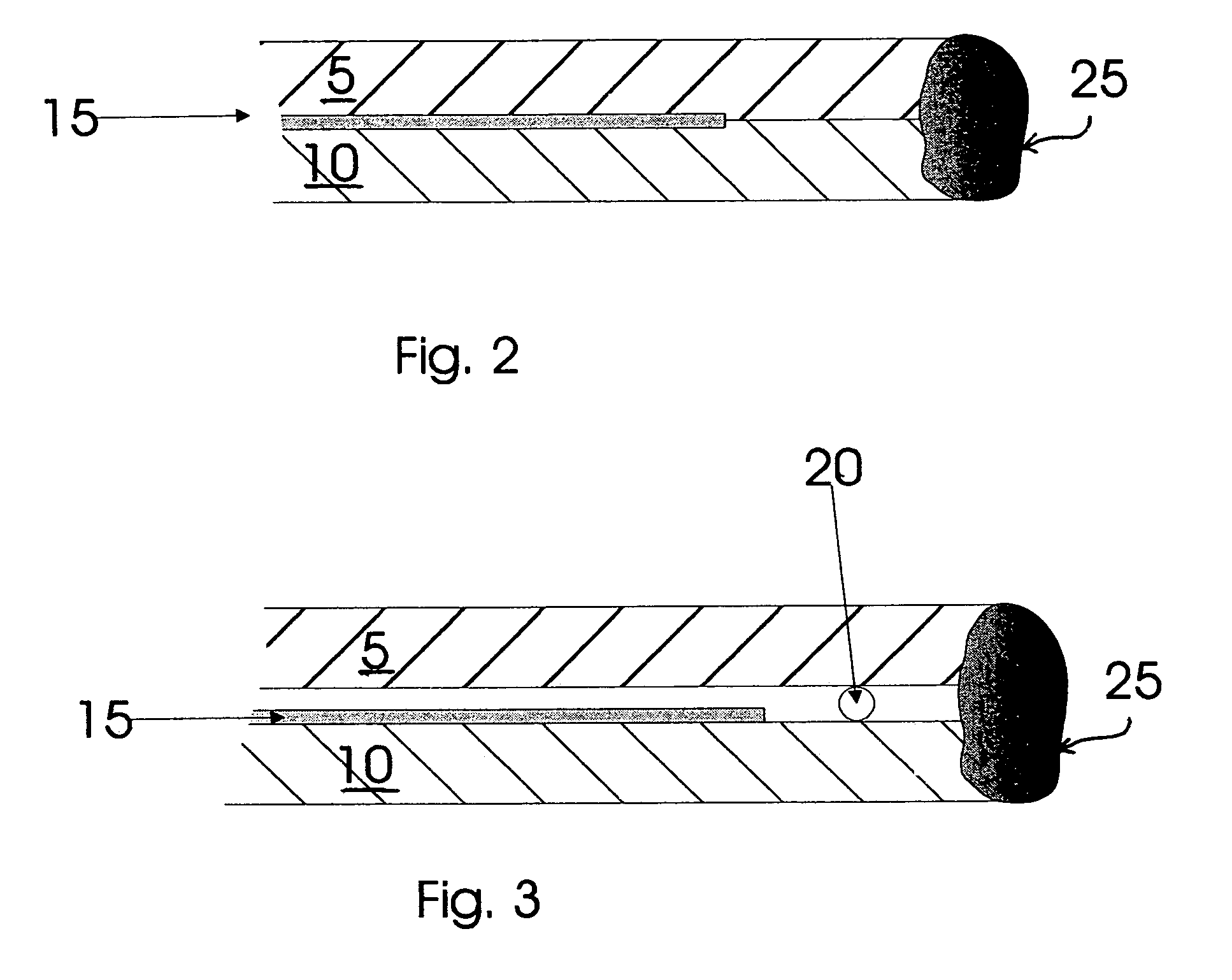Sealing of organic thin-film light-emitting devices
a light-emitting device and organic technology, applied in the manufacture of electric discharge tubes/lamps, electrical devices, electric devices, etc., can solve the problems of increasing costs and complexity, reducing or destroying the utility of flat panel display or flat panel illumination sources utilizing these devices, and reducing or destroying the utility of flat panel illumination sources, so as to achieve the effect of allowing flexibility and further enhancing manufacturing flexibility
- Summary
- Abstract
- Description
- Claims
- Application Information
AI Technical Summary
Benefits of technology
Problems solved by technology
Method used
Image
Examples
Embodiment Construction
[0021]Referring to FIG. 1, a substrate 10 and a cover 5 are welded together by placing an energy absorbing material 35, shown here as a thin rod or fiber, along the junction of the substrate and cover and directly applying energy to the exposed material 35, shown here as the energy beam 45 from a laser 40. In accordance with one embodiment of the invention, the energy absorbing material is positioned along the peripheral side edge of the cover 5, and also in contact with the adjacent main face of substrate 10. The energy absorbing material gets hot and transfers a portion of the heat to the substrate and cover. The energy is applied until the substrate, cover, and energy absorbing material fuse. Depending on the nature of the energy absorbing material, the substrate and cover may fuse directly, they may each fuse to the energy absorbing material, or the energy absorbing material may diffuse into the cover and substrate, which fuse directly to one another.
[0022]FIGS. 2-5 illustrate v...
PUM
 Login to View More
Login to View More Abstract
Description
Claims
Application Information
 Login to View More
Login to View More - R&D
- Intellectual Property
- Life Sciences
- Materials
- Tech Scout
- Unparalleled Data Quality
- Higher Quality Content
- 60% Fewer Hallucinations
Browse by: Latest US Patents, China's latest patents, Technical Efficacy Thesaurus, Application Domain, Technology Topic, Popular Technical Reports.
© 2025 PatSnap. All rights reserved.Legal|Privacy policy|Modern Slavery Act Transparency Statement|Sitemap|About US| Contact US: help@patsnap.com



